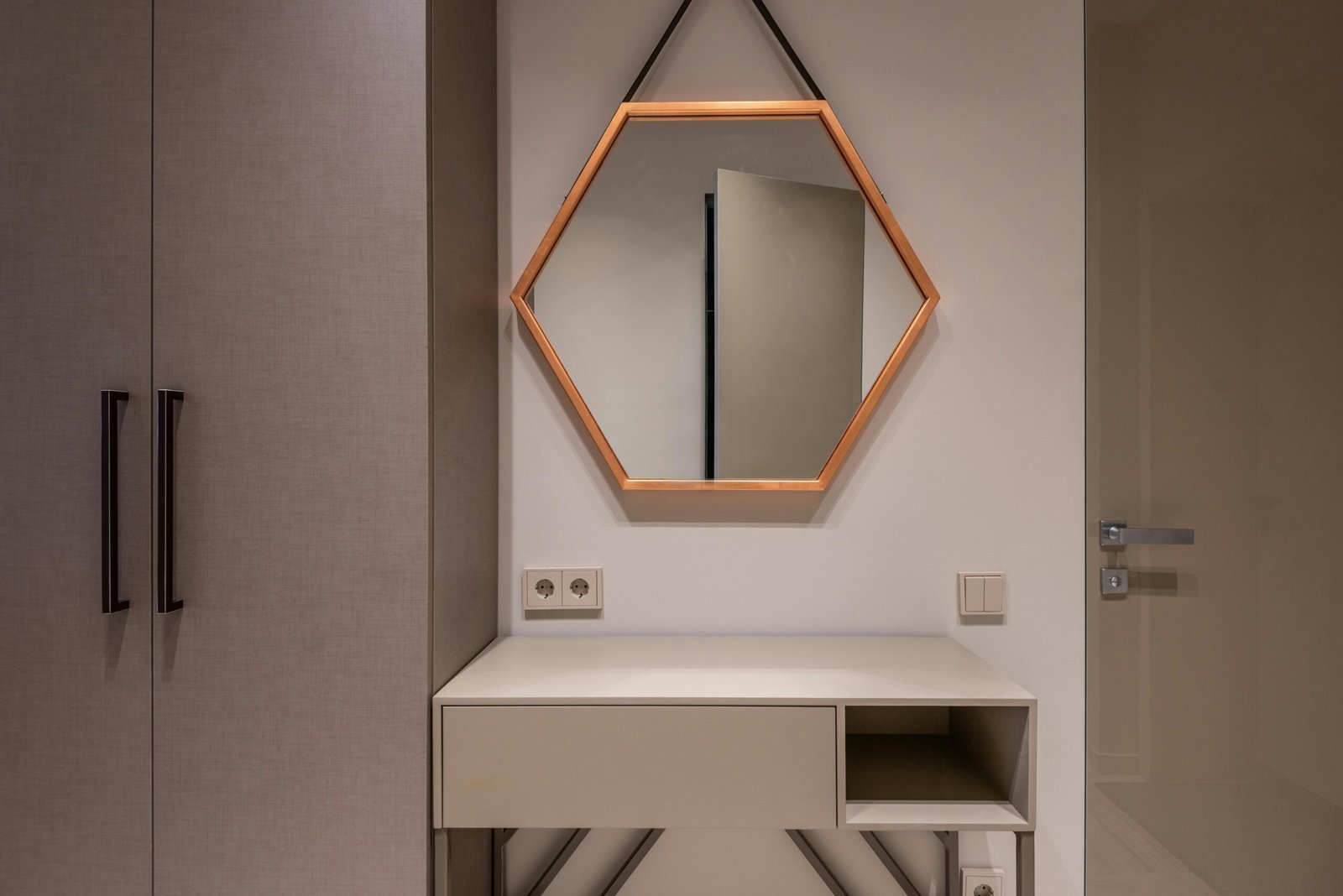How Do You Frame a Closet | Diy Guide in 2024

Introduction
When it comes to optimizing space and organization in your home, closet framing plays a pivotal role. This comprehensive DIY guide will walk you through the process of framing your closet, from understanding the basics to adding the finishing touches.
Understanding Closet Framing Basics
At its core, closet framing involves constructing a framework using vertical studs, horizontal plates, and support structures. This framework creates a sturdy skeleton upon which the rest of the closet components are built.
In closet framing, vertical studs are the vertical members that form the main support structure of the closet. These studs are typically made of 2×4 lumber and are spaced at regular intervals along the walls of the closet. Horizontal plates, including the bottom plate and top plate, run parallel to the floor and ceiling, respectively, and serve to connect the vertical studs together, creating a rigid frame.
The bottom plate is attached to the floor using fasteners such as screws or nails, while the top plate is secured to the ceiling or overhead structure. Vertical studs are then installed between the bottom and top plates, spaced approximately 16 to 24 inches apart, depending on the design and load-bearing requirements of the closet.
Once the vertical studs are in place, additional support structures such as cross braces, corner reinforcements, and center supports may be added to strengthen the frame and prevent sagging or warping over time. These support structures help distribute the weight of the closet contents evenly and provide added stability to the frame.
Overall, understanding the basics of closet framing is essential for creating a sturdy and functional storage space. By mastering the fundamentals of vertical studs, horizontal plates, and support structures, you can confidently tackle closet framing projects and customize your storage solutions to suit your needs and preferences.
Why DIY Closet Framing?
DIY (Do-It-Yourself) closet framing offers several compelling advantages that make it an attractive option for homeowners looking to optimize their storage space. Here are some reasons why DIY closet framing is worth considering:
- Cost Savings: One of the primary reasons homeowners opt for DIY closet framing is the potential for significant cost savings. By taking on the project themselves, homeowners can avoid the labor costs of hiring professional contractors. Additionally, DIYers can shop around for materials and find budget-friendly options without compromising on quality.
- Customization: DIY closet framing allows homeowners to customize their storage solutions to meet their specific needs and preferences. Whether you have a unique closet layout, specific storage requirements, or aesthetic preferences, DIY framing gives you the freedom to design a closet that is tailored to your style and lifestyle.
- Sense of Accomplishment: There’s a sense of satisfaction that comes with completing a DIY project, and closet framing is no exception. Taking on the challenge of building your own closet allows you to hone your skills, learn new techniques, and see the tangible results of your hard work. The sense of accomplishment that comes from completing a DIY project can be immensely rewarding and fulfilling.
- Creative Expression: DIY closet framing provides an opportunity for creative expression and personalization. Whether you want to incorporate unique design elements, experiment with different materials, or add decorative touches, DIY framing allows you to unleash your creativity and bring your vision to life.
- Learning Experience: DIY projects offer valuable learning experiences that can enhance your knowledge and skills. By tackling closet framing yourself, you have the opportunity to learn about construction techniques, woodworking principles, and building codes. These skills can be valuable not only for future DIY projects but also for understanding and maintaining your home.
Planning Your Closet Space
Before diving into the framing process, it’s essential to plan your closet space carefully. This includes assessing the available area, determining closet dimensions, and choosing the type and layout of your closet to optimize functionality and aesthetics.
Assessing Available Space
Start by measuring the dimensions of the room or designated closet area, taking note of any obstacles or obstructions.
Measure the Dimensions: Begin by measuring the dimensions of the room or area where the closet will be located. Use a tape measure to record the length, width, and height of the space. Pay attention to any architectural features such as alcoves, angles, or irregularities that may impact the design and layout of the closet.
Consider Obstacles: Take note of any obstacles or obstructions within the space, such as windows, doors, electrical outlets, or HVAC vents. These elements will need to be accounted for when planning the layout of the closet to ensure there is adequate clearance and functionality.
Evaluate Ceiling Height: Determine the height of the ceiling in the space where the closet will be located. Consider whether you have the option to build floor-to-ceiling storage or if there are any height limitations that may affect the design of the closet.
Assess Accessibility: Evaluate the accessibility of the space to determine how easily you can maneuver within it. Consider factors such as doorways, pathways, and clearance around furniture to ensure that the closet will be easily accessible and functional.
Identify Storage Needs: Consider your storage needs and preferences when assessing available space. Determine the types of items you plan to store in the closet, such as clothing, shoes, accessories, or household items, and estimate the amount of space required for each category.
Plan for Future Growth: Anticipate future storage needs and plan accordingly when assessing available space. Leave room for expansion or reconfiguration of the closet layout to accommodate changes in your storage requirements over time.
Determining Closet Dimensions
Consider your storage needs and preferences when deciding on dimensions, ensuring there is ample space for hanging garments, shelves, and other storage components.
Choosing Closet Type and Layout
Select the type of closet that best suits your space and lifestyle, whether it’s a walk-in closet, reach-in closet, or wardrobe closet. Determine the layout of your closet, including the placement of shelves, rods, drawers, and accessories, to optimize storage and organization.
Gathering Materials and Tools
With your closet plans in place, gather the necessary materials and tools for the framing project. Essential materials include lumber for framing, fasteners, and hardware, while necessary tools may include a saw, drill, level, and tape measure.
Essential Materials for Closet Framing
- Lumber (2×4 studs, plywood)
- Fasteners (screws, nails)
- Anchors (for securing to walls)
- Closet hardware (rods, brackets, shelf supports)
Necessary Tools for the Job
- Circular saw or miter saw
- Cordless drill/driver
- Level
- Tape measure
- Hammer
- Screwdriver
Preparing the Area
Before beginning construction, prepare the area by clearing out any existing items and debris. Mark out the dimensions of the closet on the floor and walls using a tape measure and chalk or masking tape to serve as a guide for framing.
Clearing the Space
Remove any furniture, clothing, or belongings from the area where the closet will be constructed. This allows for easier access and prevents damage to items during construction.
Marking Out Closet Dimensions
Using a tape measure, mark the dimensions of the closet on the floor and walls using chalk or masking tape. This includes marking the location of walls, door openings, and any structural elements that may impact framing.
Building the Frame
With the area prepared, it’s time to start building the frame for your closet. This involves installing the bottom plate, erecting the vertical studs, adding the top plate, and securing the frame to the wall for stability.
Installing the Bottom Plate
Begin by installing a pressure-treated lumber bottom plate along the perimeter of the closet area, using construction adhesive and fasteners to secure it to the floor.
Erecting the Vertical Studs
Next, erect vertical studs spaced at intervals along the bottom plate, ensuring they are plumb (vertically straight) and securely fastened to both the bottom plate and top plate.
Adding the Top Plate
Install a top plate parallel to the bottom plate, spanning the length of the closet walls, and fasten it to the tops of the vertical studs to complete the frame structure.
Securing the Frame to the Wall
Secure the frame to the surrounding walls using anchors or fasteners, ensuring it is firmly anchored and stable.
Adding Support Structures
Once the frame is in place, add support structures to reinforce the closet and provide additional stability. This may include installing cross braces, reinforcing corners, and adding center supports as needed.
Installing Cross Braces
Install horizontal cross braces between vertical studs to add rigidity and prevent the frame from twisting or shifting.
Reinforcing Corners
Add corner braces or blocks to reinforce the corners of the frame, ensuring they are securely fastened for added strength.
Adding Center Supports (if necessary)
For larger closets or heavy loads, consider adding center supports such as additional vertical studs or support beams to distribute weight evenly and prevent sagging.
Installing Closet Components
With the frame complete, it’s time to install the various components of your closet, including closet rods, shelves, and doors if desired.
Attaching Closet Rods
Install closet rods at the desired height within the closet frame, using brackets or supports to secure them in place.
Mounting Shelves
Install shelves within the closet frame, using shelf brackets or supports to secure them to the vertical studs.
Adding Doors (if desired)
If you prefer a closed-off closet space, install doors using hinges or sliding mechanisms, ensuring they are properly aligned and securely attached to the frame.
Step 7: Finishing Touches
Once all components are in place, add the finishing touches to complete your closet framing project.
Sanding and Smoothing Edges
Sand down any rough edges or surfaces of the frame to create a smooth and uniform finish.
Priming and Painting the Frame
Prime the frame to seal the wood and prepare it for painting, then apply a coat of paint in the color of your choice to match your decor.
Installing Trim and Molding
Add decorative trim and molding to enhance the appearance of the closet and conceal any gaps or imperfections in the frame.
Conclusion
Congratulations! You’ve successfully framed your closet, creating a customized storage solution that maximizes space and organization in your home. Enjoy your newly framed closet and the satisfaction of a DIY project well done!




